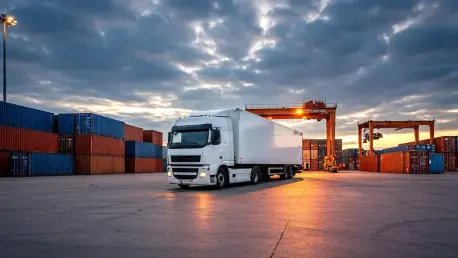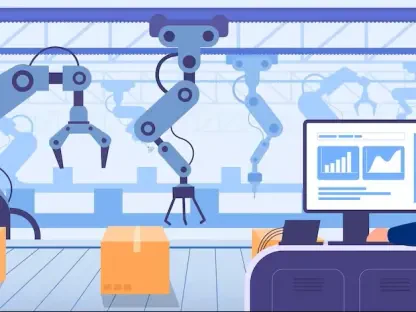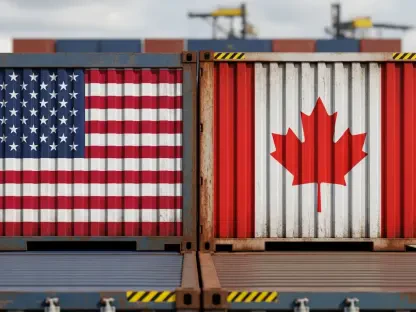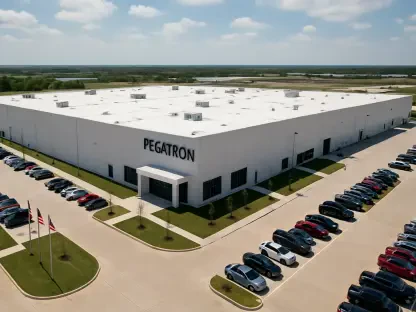In the ever-evolving logistics and freight industry, the strategic decisions made by companies like Flexport and DAT can significantly reshape the landscape. We have the opportunity to discuss these pivotal moves with Rohit Laila, an expert in logistics technology. With decades of experience, Rohit provides valuable insights into recent developments, highlighting the implications of major transactions such as Flexport’s sale of the Convoy tech stack to DAT.
What led Flexport to the decision to sell the Convoy tech stack to DAT after acquiring it just two years ago?
Flexport’s decision to sell the Convoy tech stack shortly after acquiring it seems to stem from its broader strategic goals in freight forwarding. The tech stack was initially brought in to enhance Flexport’s capabilities, but managing it appeared to complicate the core business operations. The realization that a neutral platform might not be neutral was critical. This insight led them to pivot away from holding a tool that added operational complexity, potentially creating conflicts of interest within their primary services.
Considering the acquisition price was reportedly $16 million, how significant is the return on investment for Flexport with the sale to DAT, which was around $250 million?
The sale realized a substantial return on investment, providing Flexport with significant financial leverage compared to its initial expenditure. This impressive growth, from a purchase price of $16 million to a sale price near $250 million, underlines how Flexport capitalized on market demand and tech value. This return not only boosts Flexport’s financial standing but also validates its strategic decision to acquire the tech in the first place, ensuring progress in their primary areas without stretching themselves thin.
How does Flexport plan to manage its primary business of freight forwarding now that the Convoy tech stack is sold?
By selling the Convoy tech stack, Flexport can redirect focus to its core competency in freight forwarding. The technology complexities associated with Convoy are now eased, allowing Flexport to streamline operations and concentrate on strengthening its brokerage strategy. This shift lets them utilize the remaining digital brokerage tools without the encumbering aspects that the broader Convoy tech stack introduced.
Can you elaborate on Ryan Petersen’s statement that a “neutral platform is not neutral”? How has this impacted Flexport’s operations?
Ryan Petersen highlighted a significant challenge within the logistics tech sector—the perceived neutrality of platforms. In essence, controlling a platform meant to serve diverse stakeholders could inherently lead to biases, complicating Flexport’s role as a major freight forwarder. This realization affected how Flexport positioned itself in the market, prompting them to divest from the tech stack that could hinder their reputation of impartiality and strategic positioning.
Flexport will continue using the Convoy system despite its sale. How does Flexport plan to maintain its status as the biggest customer for DAT’s Convoy platform?
Flexport’s strategy involves remaining the leading user of DAT’s Convoy platform through consistent engagement and usage. By leveraging their volume of automated transactions, Flexport aims to ensure robust utilization. This approach allows them to maximize the benefits of the platform while sidestepping management complexities. They hope to continue their relationship with DAT by being intricately involved as consumers rather than the operators of the system.
How does DAT anticipate integrating the Convoy tech stack into its existing range of offerings, considering its recent acquisitions like Trucker Tools and Outgo?
DAT plans to blend the Convoy tech stack smoothly into its broader spectrum of offerings, following its successful acquisition approach demonstrated with Trucker Tools and Outgo. The integration strategy focuses on enhancing their technological and service breadth, utilizing Convoy’s automation strengths to power their services efficiently. DAT anticipates a staged integration that builds on its existing framework, ultimately offering comprehensive solutions to industry participants.
DAT’s CEO Jeff Clementz mentioned different segments of how loads are offered in the market. Could you describe these segments and how the integration of the Convoy tech stack plans to improve these processes?
The load offering segments as described involve private broker networks, additional load boards, and the final DAT Convoy system. Integrating the Convoy tech stack streamlines these processes, allowing brokers to effortlessly move loads through an automated initial placement on the Convoy platform, with fallback options utilizing DAT’s load board. This integration aims to elevate efficiency, reduce human intervention, and optimize load placements in a seamless, systematic manner.
What role does automation play in the newly acquired Convoy platform, and how is it expected to enhance DAT’s services for brokers and carriers?
Automation within the Convoy platform crucially reduces the need for manual intervention, thus quickening processes for brokers and carriers. By utilizing comprehensive digital solutions, automation simplifies load matching, enhances visibility, and secures transactions, significantly improving the efficiency and reliability of the service offerings. For DAT, this automation means consolidating services that serve brokers and carriers in an intuitive and cost-effective manner.
Could you expand on the expected “waterfall” process from the Convoy platform to the DAT platform? How does this process benefit the brokers and carriers?
The “waterfall” process is a systematic approach where loads initially sent to the Convoy platform are cascaded down to DAT’s platform if unmatched. This method benefits brokers and carriers by ensuring assertive placement, giving brokers an autopilot-like initial distribution and carriers a consistent set of options. This structured flow provides multiple tiers of placement opportunity without load stagnation, enhancing market fluidity and operational dependability.
While DAT foresees that the load board will remain dominant for a while, what timeline or phases does DAT predict for the integration of the Convoy platform into everyday use?
DAT envisions a phased integration, where the traditional load board remains dominant initially. Over time, emphasis will shift to Convoy’s automated system as users adapt. They predict incremental innovation in steps: enhancing tech compatibility, user adaptation, and expanding transactional capacity, thereby embedding Convoy into regular operations gradually yet strategically.
With fraud prevention being a significant selling point, how does the integration of Convoy’s fraud prevention tools strengthen DAT’s existing capabilities?
The integration of Convoy’s distinctive fraud prevention utilities bolsters DAT’s security profile. Convoy’s tools complement DAT’s pre-existing solutions, providing a comprehensive guard against fraud. This enhancement not only fortifies transactional integrity within the platform but also reassures users about the protective measures in place, creating a safer and more trusted environment.
Clementz mentioned there will be no upfront fees for DAT users to access the Convoy platform. What is DAT’s strategy for managing customer acquisition costs and onboarding new users?
DAT’s strategy leverages the platform’s value to attract users via low customer acquisition costs, attributable to no upfront fees. This tactical allowance focuses expenses more on transaction success than initial user sign-up. Incremental onboarding involves structured steps, aligning user demand with service capacity, thereby minimizing immediate costs and fostering long-term user engagement and alignment.
How does DAT plan to address the potential high demand and the creation of a waitlist due to the anticipated influx of users signing up for the Convoy platform?
DAT prepares to tackle this influx through sophisticated onboarding procedures, establishing a waitlist to manage entry effectively without overwhelming resources. This anticipatory queue strategically aligns demand with operational capability, ensuring sustainable adoption rates while maintaining service quality, pacing new accounts to the platform’s handling capacity.
How has DAT progressed with integrating acquisitions like Trucker Tools into its system, and what lessons from those integrations are being applied to the Convoy tech stack integration?
DAT’s integration of Trucker Tools exemplifies their structural approach, focused on gradual assimilation rather than abrupt changes. The insights derived emphasize harmonization not just in technology, but in personnel capabilities and client interaction models. Applying these lessons to Convoy’s integration, DAT aims for seamless transitions that respect legacy traits while maximizing new tech virtues.
What are DAT’s broader strategic goals with the recent acquisitions, including Convoy, and how do they align with Roper Technologies’ overall business strategy?
DAT’s broader goals involve expanding service interoperability and enhancing tech sophistication, thereby fostering growth through comprehensive offerings. These acquisitions align with Roper Technologies’ emphasis on innovation and intricate service depth, contributing to overarching financial and strategic targets. DAT aims to consolidate its position through pivotal expansions, providing cutting-edge solutions within the logistics industry’s evolving landscape.









